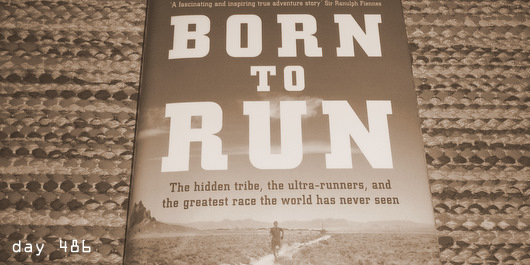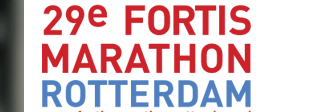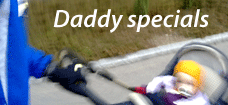 I don’t read a lot, I’m not a book worm. Mostly it’s due to a lack of time and patience. Although I always enjoy a good read. If one asks whether a book’s good that let’s you fall asleep quickly at night (and you’re refreshed and feel good next morning) or a book is good because you can’t put it away and hence it won’t let you fall asleep. With all the consequences involved, I’m all for the latter. This one was doing a good job at it, it’s a good book. Pekka K. who joined a couple of runs earlier in Nov and Dec recommended it and handed me his copy, he got from the Helsinki city libraby. It wasn’t problem to get through it still during the standard borrowing time of 30 days, for both Pekka first and me afterwards. (Or was it Pekka?)
I don’t read a lot, I’m not a book worm. Mostly it’s due to a lack of time and patience. Although I always enjoy a good read. If one asks whether a book’s good that let’s you fall asleep quickly at night (and you’re refreshed and feel good next morning) or a book is good because you can’t put it away and hence it won’t let you fall asleep. With all the consequences involved, I’m all for the latter. This one was doing a good job at it, it’s a good book. Pekka K. who joined a couple of runs earlier in Nov and Dec recommended it and handed me his copy, he got from the Helsinki city libraby. It wasn’t problem to get through it still during the standard borrowing time of 30 days, for both Pekka first and me afterwards. (Or was it Pekka?)
But with all this kudos upfront, let’s get to the book now. Born to Run is about long distance running and actually more ultra distances than standard marathons, about ancient native American tribes who keep up running as part of their culture, about barefoot running, about protagonists in the US ultra-distance running scene, about an ultimate race in the Mexican Copper Canyons and about the minor aspect that running made mankind to it has become and it still makes us better people.
With this modest claim the author, Christopher McDougall unfolds in his 2009 released book a story on how he finds the Tarahumara, a native American tribe in the Mexican Copper Canyons with running being at the centre of their culture. Caballo Blanco, the “white horse”, a US American living a similar life most of his time in the canyon region is a central figure of the foreground story who builds the bridge and is the connection to this old tribe. Caballo tells his story with the Tarahumara and tries to get the ultimate race together, the best Tarahumara runners against the best US ultra-distance runners.
Although the story is well written and of course about halfway into the book I wanted to know whether Caballo manages it to get the race together and how it would go. But the more interesting part of the book for me were stories and cases that are told on the side and in the background, on barefoot running and on running in mankind’s evolution.
Man survived because he/she could run
Upfront, I’m not sure how much one should believe this part, but the case is well laid out and it might be playing a part in mankind’s evolution. The statement goes like this: man can outrun any other mammal, not in speed but in endurance. All animals have two downsides in their systems. First, they can perspire only through their mouth and not through the whole body skin. Hence animals overheat after a while. McDougall digs up research cases of this and the practical application where tribes in Africa still hunt Antelopes with their bare hands, or feet for that matter. The second disadvantage in animals’ system is the breathing rythm, their position on 4 feet and their bodies are build that they can breathe in the same rythm in which they run. A gepard’s lungs compress when its feet are together under the body and expand when the front legs are wide stretched to the front and the rear legs stretched backwards. Man can breathe “offcycle” and adjust breathing to the effort as needed. If I recall it correctly the point herein was that a little bit faster than slow running is for an antelope very much more of an effort as for a human being. Anyway, it was an interesting piece of science and thus worth reading.
Barefoot running improves probably any runner’s training results
The part on barefoot running was so inspring that I started to do it once or twice a week as part of a training session. The gist: our foot’s central piece is an arche structure. Running bare feet strengthens the numerous muscles and ligaments in this arche structure. Putting it into a running shoe that restricts its movement and even worse supports the arche structure from below is making our feet not stronger, but rather weaker than they should be. Apparently that’s the main source of many foot, leg, hip or back problems that arise from running.
Barefoot Ted is the protagonist of barefoot running in McDougall’s book. He’s a bit of a chatter box and from pictures on his and other websites quite strongly built for a long distance runner. But he’s good, especially without shoes. Of course he doesn’t do miles and miles on the tarmac or wilderniss trails without protection around his feet. He uses the Vibram Fivefingers shoe, eh… sock, or whatever you call it. And as Ted says, “Yes, running should be free, but people need something to buy to really enjoy it”. (The first part is Caballo Blanco’s motto, Ted adds a shot of realism to it.)
The convincing part of the story is that US west coast college track and field coaches have discovered that their athletes get better when they train partly in bare feet. The Nike scouts that sponsor and are in contact with those college coaches have quickly picked that up and transferred the message to headquarters. Interestingly the Nike Free product launches appeared shortly after in 2006. Well, one can shell out 85 USD for those sneakers or just do what those shoes intend to imitate, run bare footedly.
One great thing about this book “Born to Run” is that the events and people mentioned are all of the recent past - pretty much the last 10 years or so - and the book came out just this spring. You can dig up more on the interesting aspects of the book on the internet and see how things have evolved since then.
I definitely recommend this read.
Tags: book, born to run








Leave a Reply
You must be logged in to post a comment.